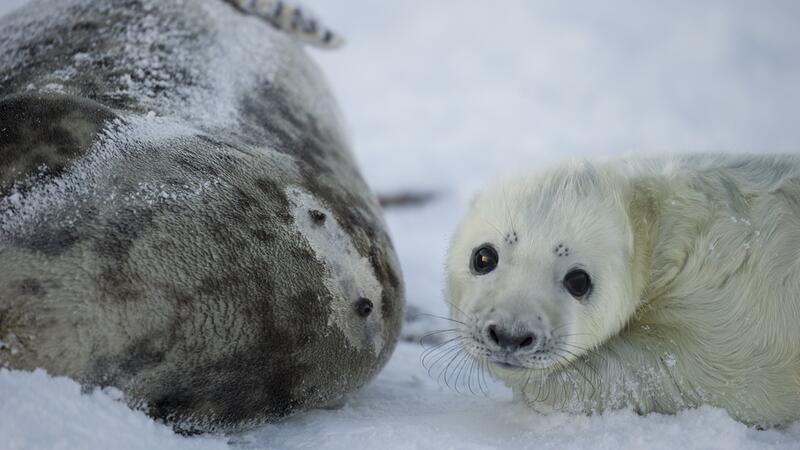Grey seal numbers in Wadden Sea increase with slowing pace

The grey seal numbers in the Wadden Sea and Helgoland continue to grow, though at a lower rate than last year. Over the past five years, grey seal pups in this region have shown an average annual growth rate of 9 percent, while overall grey seal counts during the moulting season have grown by 12 percent annually. These findings are highlighted in the latest “Grey Seal Surveys of the Wadden Sea and Helgoland 2023-2024” report, published under the Trilateral Cooperation on the Protection of the Wadden Sea.
Each year, the trilateral Expert Group on Marine Mammals – comprising researchers and site managers from Denmark, Germany, and the Netherlands – conducts coordinated aerial surveys across the Wadden Sea and Helgoland (Schleswig-Holstein). During the winter pupping season from November 2023 to January 2024, a total of 2,547 grey seal pups were counted, marking 1 percent overall increase compared to the previous season. Most pups – 1,395 – were counted in the Dutch Wadden Sea, this represented a 3 percent decrease compared to 2022. Lower Saxony also reported a decline with 359 pups, though adverse weather prevented complete surveys of some breeding habitats. However, Helgoland saw 739 pups, 16 percent more than last year. Grey seal pups were not observed in the eastern part of the Wadden Sea during the peak in pupping, but later in the season, four nursing pups were observed in Denmark and two in Schleswig-Holstein.
Sophie Brasseur, co-author of the report and researcher at Wageningen University and Research: “Compared to earlier counts, the growth in numbers during the moult, but especially pup numbers seem to slow down. It is too early to tell if this is due to a change in the environment or whether the counts were simply affected by the harsh weather encountered this season.”
In March and April, during the peak moulting period, counts of all grey seals were conducted. This year, experts recorded 11,515 grey seals, a 9 percent increase from last year. Approximately 67 percent of the grey seals were recorded in the Dutch Wadden Sea, with 7,821 individuals, reflecting a 3 percent decrease as eastern Wadden Sea areas become more populated. Helgoland accounted for 14 percent of the seals counted while Lower Saxony and Hamburg combined recorded 12 percent of the grey seals. The Wadden Sea area of Schleswig-Holstein had 286 individuals, while Denmark reported 361 grey seals, double the number from last year.
Grey seals are the largest predators along the Wadden Sea coast and, like harbour seals, one of the iconic species of the region. Although the Wadden Sea Seal Agreement (WSSA) under the auspices of the Convention of Migratory Species in Bonn does not cover the grey seals, they do benefit from their inclusion in the related Seal Management Plan. This includes the annual counts, which are required to identify trends in seal numbers and variations in their geographical distribution across haul-out sites in the Wadden sea countries. These data help inform comprehensive conservation and management of the grey seal population. CWSS acts as the secretariat of WSSA.
